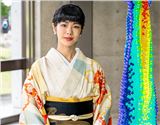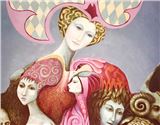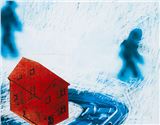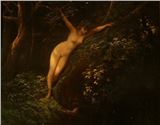More Than Meets The Eye: 10 Years Of Three Shadows +3 Gallery
Speaking of camera angles in Photography, "far" and "near" seem to be a set of binary opposite imagery that are unavoidable in the process of artistic creation. The real and objective scenes recorded by the camera, due to different viewing angles, may lead to experiences of visual shock or alienated feeling. This is due to the camera is unconscious, while the audience reception is selective: viewing the scene from respective angles, the human brain will "edit" the scene in front of the eyes according to prior knowledge and memory. As such, the "unedited" picture produced by the camera, when differentiated from the scene recognised in the human mind, will eventually forms a non-utilitarian sense of aesthetics.
The 10th anniversary is an occasion for Three Shadows +3 Gallery to review its growth and development over the last decade since its inception. Taking "far" and "near" as the starting point, this exhibition features 28 artists/groups, including prominent contemporary artists in the history of Chinese photography, emerging artists over the past few years, as well as renowned photographers from Japan, South Korea, Europe, and the United States. An array of their classic works and latest pieces are to be showcased in this special exhibition.
It is worth mentioning that our choice of the binary opposite imagery of "far" and "near" is not intended to emphasise the distance between the two. On the contrary, we hope to transcend the opposite relationship between them through constant research, so as to inspire the viewer to exceed the visual threshold and reach the inner world behind the material appearance; the perceivable yet trivial things in the universe will eventually be discovered through the "eyes" of the camera lens.

Recommended for you
Speaking of camera angles in Photography, "far" and "near" seem to be a set of binary opposite imagery that are unavoidable in the process of artistic creation. The real and objective scenes recorded by the camera, due to different viewing angles, may lead to experiences of visual shock or alienated feeling. This is due to the camera is unconscious, while the audience reception is selective: viewing the scene from respective angles, the human brain will "edit" the scene in front of the eyes according to prior knowledge and memory. As such, the "unedited" picture produced by the camera, when differentiated from the scene recognised in the human mind, will eventually forms a non-utilitarian sense of aesthetics.
The 10th anniversary is an occasion for Three Shadows +3 Gallery to review its growth and development over the last decade since its inception. Taking "far" and "near" as the starting point, this exhibition features 28 artists/groups, including prominent contemporary artists in the history of Chinese photography, emerging artists over the past few years, as well as renowned photographers from Japan, South Korea, Europe, and the United States. An array of their classic works and latest pieces are to be showcased in this special exhibition.
It is worth mentioning that our choice of the binary opposite imagery of "far" and "near" is not intended to emphasise the distance between the two. On the contrary, we hope to transcend the opposite relationship between them through constant research, so as to inspire the viewer to exceed the visual threshold and reach the inner world behind the material appearance; the perceivable yet trivial things in the universe will eventually be discovered through the "eyes" of the camera lens.
Related articles
Starting July 16, the Three Shadows +3 Gallery in Beijing will celebrate its 10th anniversary with a special exhibition featuring 29 artists and groups which have all been presented at the gallery in the past decade.
Speaking of camera angles in Photography, "far" and "near" seem to be a set of binary opposite imagery that are unavoidable in the process of artistic creation.

 ARTISTS
ARTISTS













